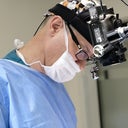I agree that shaving the bump would be nice. And I agree that you don't have a particularly projecting nose, so protecting the projection would be good. I would elevate your tip more than you did in the morphs. When you lower a bump on the bridge, it tends to make the nose *look* longer, as if the tip had drooped more, so it's important to get the tip up well enough, so you don't look at the nose after surgery and wonder why it still looks long.









